

What makes a building “eco-friendly”? As we aspire to create a more sustainable city, it can be confusing to understand and differentiate words like “green”, “net-zero”, “eco-friendly”, “sustainable”, or “resilient.” Often, they seem like greenwashing buzzwords. LEED is a type of rating system for green buildings by the U.S. Green Building Council. A building can have a certified, silver, gold, or platinum rating which is based on a range of parameters including water efficiency, lower energy consumption, improved indoor environmental quality, and many more. Yet, even LEED does not account for the inherent contradictions between green and resilient architecture. An old, low-rise, historical building can have a large carbon footprint compared to a compact, energy-efficient residential building, yet its beauty and cultural importance make people want to preserve it for decades. That longevity is a form of resilience, but does not necessarily make the building “green”. In the long term, only buildings that people love, care for and want to preserve can be truly sustainable. Here, we explore 10 of the most eco-friendly sites in Manhattan!
1. The Javits Center Green Roof, 429 Eleventh Avenue, Hell’s Kitchen
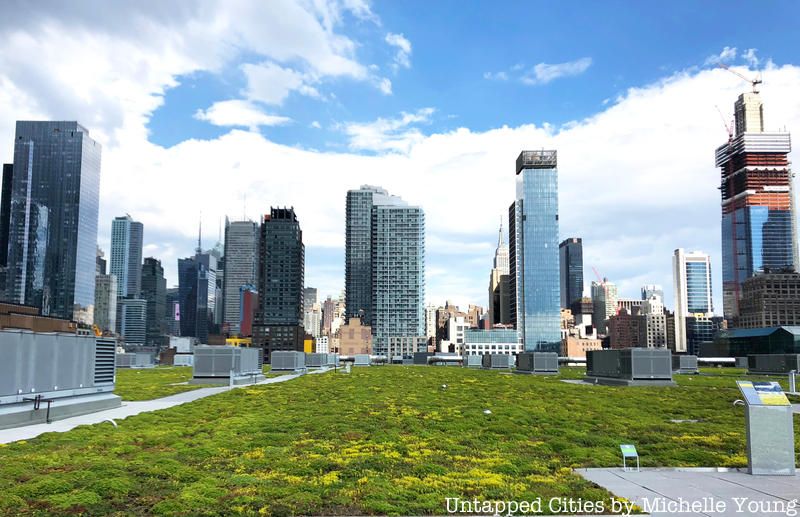

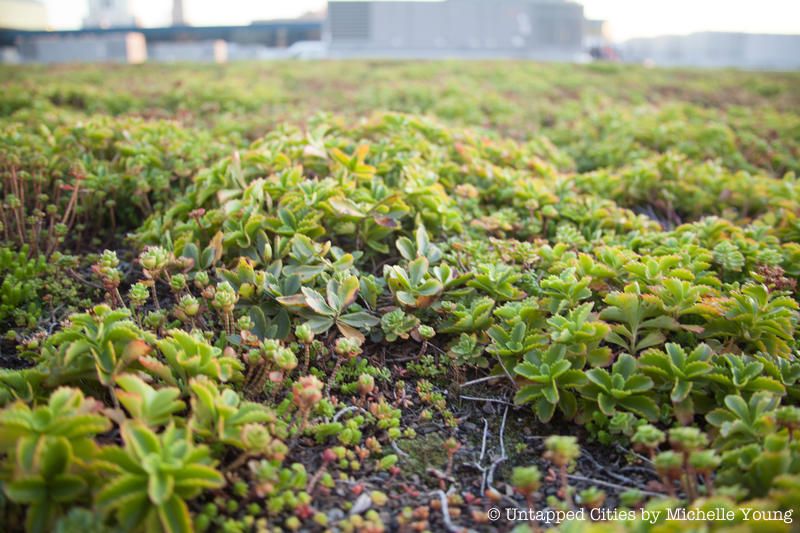
Javits Center’s 6.75-acre green roof is one of the largest in the United States, and a wildlife sanctuary for dozens of local and migratory bird species, several bat species, and thousands of insects. The green roof also houses honeybee hives that produce honey which is then sold in tiny jars. The green roof is part of the site’s commitment to “care[ing] deeply about being a better neighbor for our community and our ecosystem.” Protecting our ecosystem also means protecting ourselves and strengthening communal bonds.
According to the Javits Center website, research published by Drexel University and Cooper Union demonstrated that over the course of a year, the green roof retains more than 75% of the rain that hits it, which mitigates nearly 7 million gallons of stormwater runoff annually. In tandem, the green roof reduces heat flux into the building by 46% while reducing the urban heat island effect in the area by about 1.9 degrees Fahrenheit. NYC Audubon was able to use the Javits Center as a success story for influencing legislation related to Local Law 15.
2. The Cornell Tech Campus on Roosevelt Island
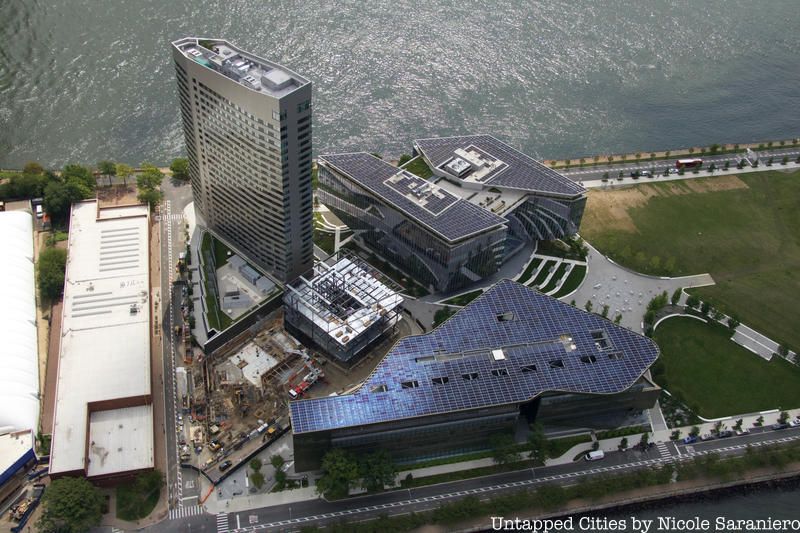
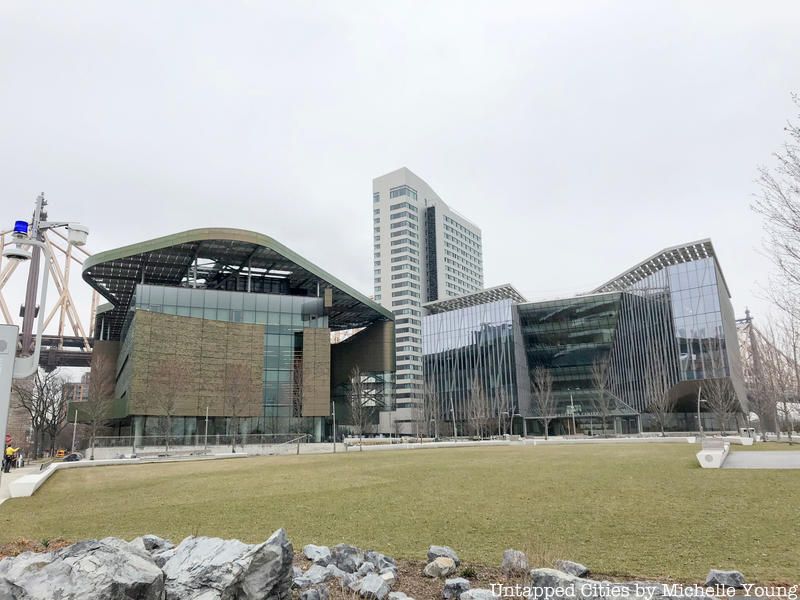
Next, we have to talk about the Cornell Tech Campus, located on Roosevelt Island in New York City’s East River. The campus is home to multiple LEED Certified buildings including the Emma and Georgina Bloomberg Center (Certified Platinum). The Bloomberg Center has a rooftop photovoltaic array system and geothermal heating and cooling systems that make the building extremely energy efficient. It is also one of the largest Net-Zero energy buildings in the United States. The Bloomberg Center is the academic and power hub on campus, with views of Manhattan across the river. The facade of the building serves as both a climate-friendly tool and a work of art. The stainless steel panels help to trap air and regulate the internal building temperature. The circles that cover these panels and tilt at various angles were determined by an algorithm that was fed an image of the Manhattan skyline and a waterfall in Ithaca, combining the college’s two campuses. The algorithm collected spatially varying statistics from these images and came up with the design you see at this eco-friendly site.
3. The Verdesian on the Park, 11 North End Avenue, Battery Park City

The Verdesian on the Park in Battery Park City is another pioneering energy-efficient apartment building. Developed in 2008, it is the country’s first high-rise (26-story) residential rental building to be awarded LEED Platinum. Designed by architect Rafael Pelli, it consumes 40% less energy and requires 50% less potable water than a conventional residential high-rise. In addition, about 50% of the construction materials consist of recycled content, including concrete, steel, public area carpeting, and synthetic gypsum wallboards. Eco-friendly paints and adhesives were used throughout the construction process. Besides this, The Verdesian also has pesticide-free rooftop gardens planted with native species that harvest rainwater for irrigation, and reduce stormwater run-off and the urban heat island effect for the surrounding neighborhood. More information on the project’s website shows detailed ways engineers and architects have made the building more energy-efficient and eco-friendly.
4. The Visionaire, 70 Little West Street, Battery Park City

Following The Verdesian, the same development team worked on a neighboring project, The Visionaire, completed in 2009. It is the first condo in the United States to earn the LEED Platinum certification, designed by architect Rafael Pelli. Craig Copeland from the American Institute of Architects (AIA) said: “The Visionaire rises up and bends outward from its sides to optimize views along the Hudson River and into the New York City Harbor, becoming an elevated and expressive vessel of sustainable urban living.”
5. The Octagon, 888 Main Street, Roosevelt Island
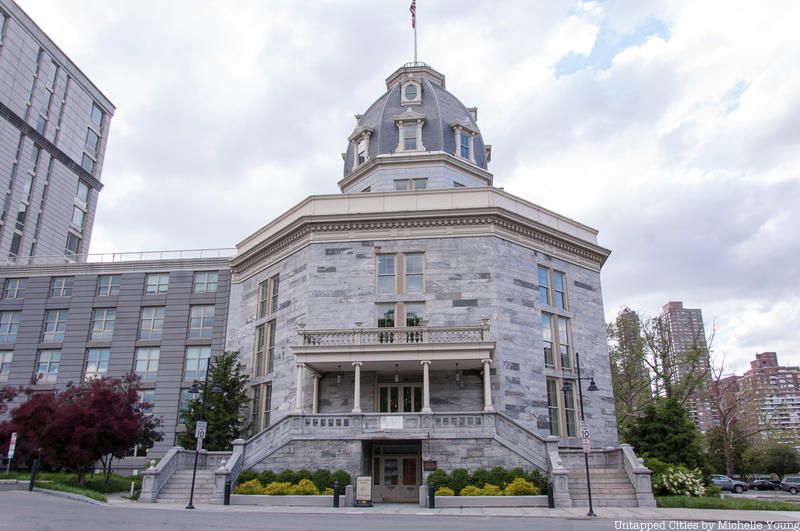
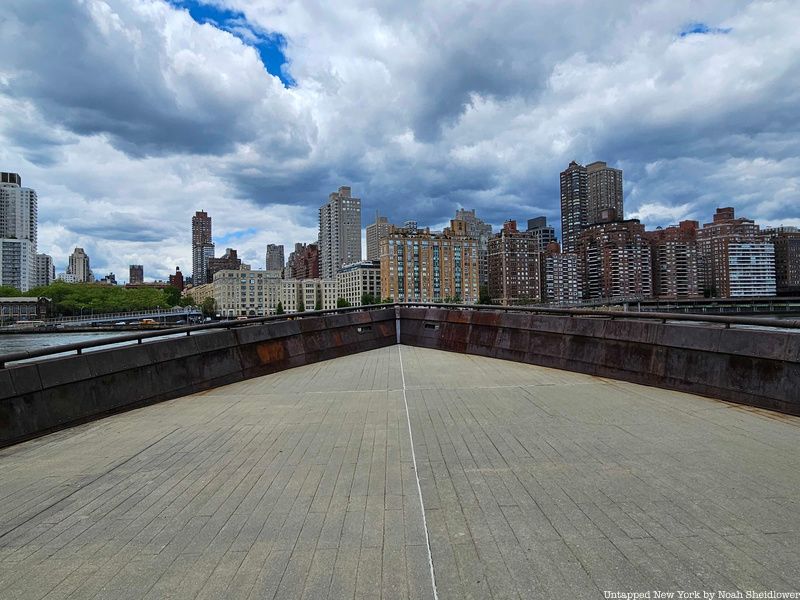
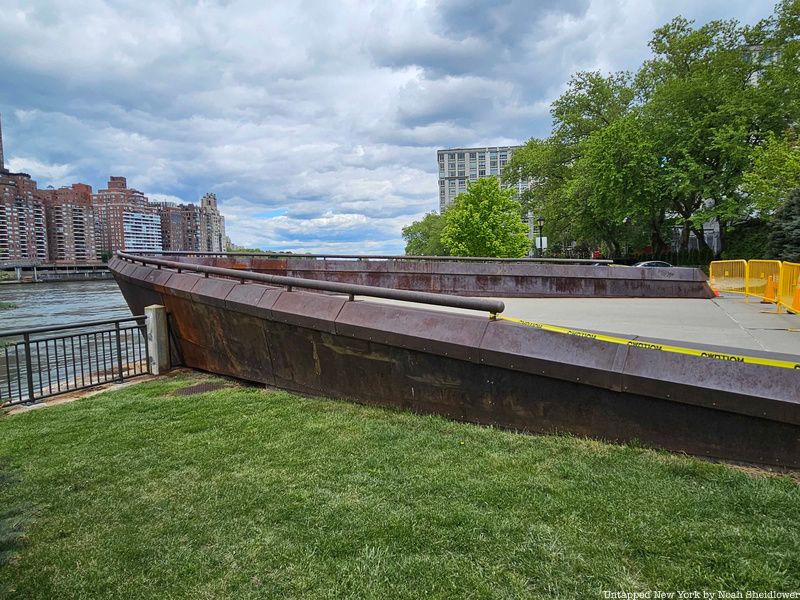
Traveling back to Roosevelt Island, we have The Octagon: a 12-story building that was part of the redevelopment of the historic Roosevelt Island hospital complex. The development is made up of a five-story octagon-shaped building constructed in 1841 designed by Alexander Jackson Davis, and two new wings that were added. Developers used 10% recycled materials and 20% local materials in the construction process, and about 50% of the construction waste was recycled. The Heating, Ventilation, and Air Conditioning (HVAC) system helps lower energy usage by 35%. Langan and Becker & Becker Associates brought the project to life. The Octagon received the largest initial award of New York State Green Building Tax credits, The Green Apple Award from the first New York City Green Building Competition, a Preservation Grant from the New York State Office for Historic Preservation, and a LEED Silver Certification in 2007.
6. Battery Maritime Building, 10 South Street, Lower Manhattan
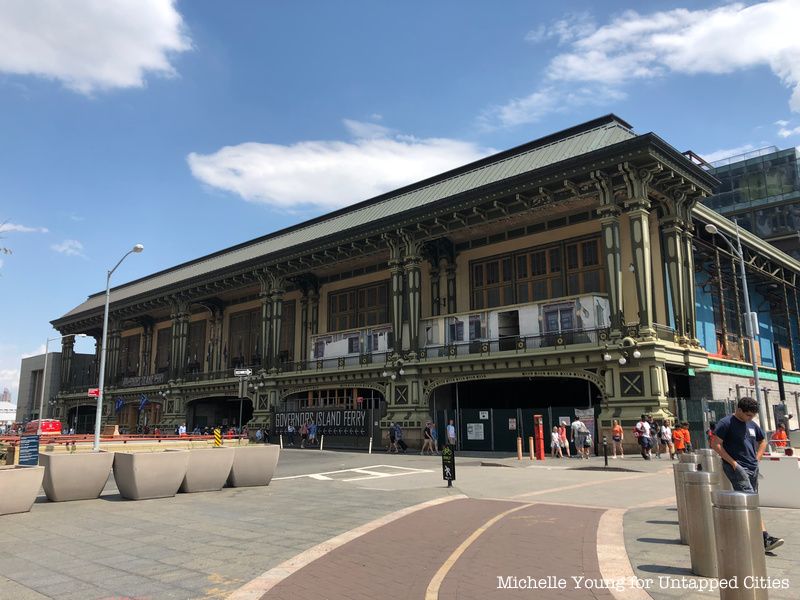
A building loved over a century ago, once the crown jewel of the New York City waterfront — The Battery Maritime Building (BMB) is a 1909 historic ferry terminal at the southern tip of Manhattan. Marvel was the lead architect of the adaptive reuse project that saved this important New York City landmark from age and neglect. Now, the building is a multi-use event and hospitality venue that revitalizes the waterfront economy. With deep respect to its history and memory of the place, the facility serves public ferry operations while home to two gracious new lobbies on the ground floor. The civic second floor became an events venue centered on the restored Great Hall and the third and fourth floors as a boutique hotel. The modern fifth-floor glass addition houses a membership club with splendid views of Hudson Bay. This building is a timeless symbol of care and resilience.
7. The Battery Playscape, Battery Park City
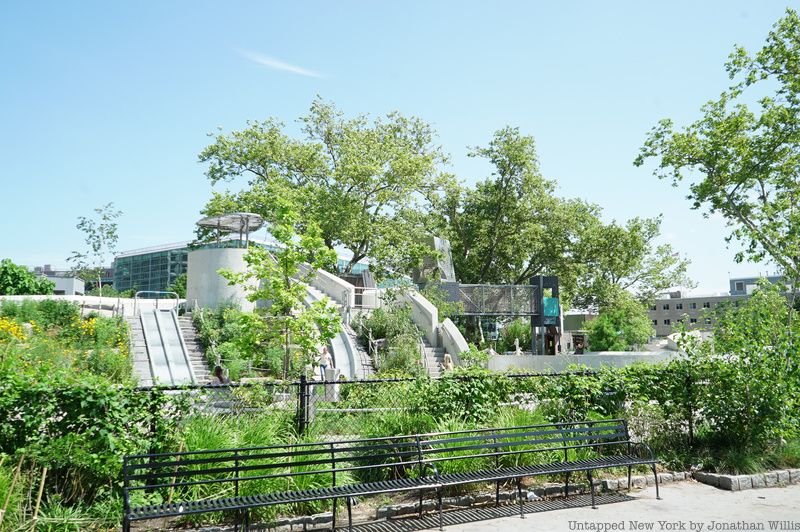
The Battery Playscape is a site at the tip of Manhattan where the river swells in the distance and locals mingle with tourists; unlike a typical scene in Manhattan, the restless bustle of the city gives in to the soothing rhythm of nature. The project was conceived through a public-private partnership between the Battery Conservancy and the NYC Department of Parks and Recreation and a collaboration between architects, landscape designers, and specialty fabricators.
A story of resilience and play, the 1.5-acre Playscape responds to the history of flooding in the area. The planting, natural landforms, and visible water management increase resilience to future flooding while keeping the site dynamic and vibrant.
8. 550 Madison Avenue Garden, Midtown
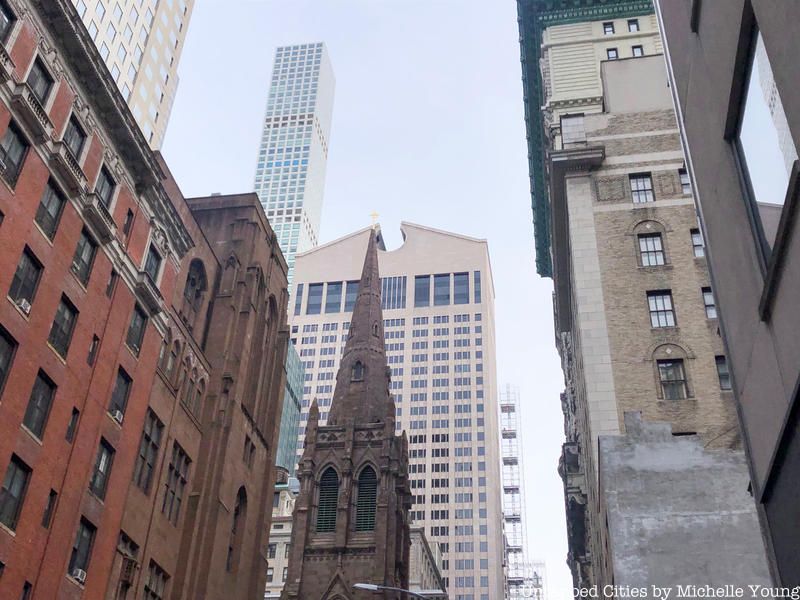
550 Madison Avenue, originally built in 1984 for single-tenant occupancy, is a postmodern skyscraper in Midtown Manhattan. This building has become a model of sustainable adaptive reuse for adapting to the contemporary workforce and the city. Snøhetta led the redesign of the public space and exterior renovations of 550 Madison, opening up the private boundaries along the west end of the tower to a densely-vegetated garden space that welcomes all passersby and New Yorkers.
9. Dia Chelsea, 537 W 22nd Street, Chelsea
Dia Chelsea is an art museum in Chelsea and is operated by the Dia Art Foundation. The museum transforms a 32,500-square-foot factory into a radical space for exhibitions. The Dia Art Foundation has had a long-standing practice of adapting and renovating existing structures to showcase contemporary art. In one of the spaces, the vaulted wood ceiling has been preserved, and other structural systems exposed to highlight and celebrate the industrial heritage of the site.
10. Perch Harlem, 542 West 153rd Street, Harlem
Perch Harlem is a 34-unit residential building and Manhattan’s first Passive House (PH) development, completed in 2017. The architect of the luxury building is Chris Benedict, who is known for designing energy-efficient buildings within a standard budget for developers. Perch Harlem consumes 80 percent less energy than a building of similar size. The walls are heavily insulated, and the windows are triple-paned, helping residents save money on air conditioning and heating costs.
Developed in Germany, Passive House (PH) is the most rigorous energy efficiency standard in the world. PH standard cuts the energy consumption of a building by 60 to 80% and considers factors like heat emissions from appliances and occupants to keep a consistent indoor temperature.
Bonus: New York Climtes Exchange, Governors Island
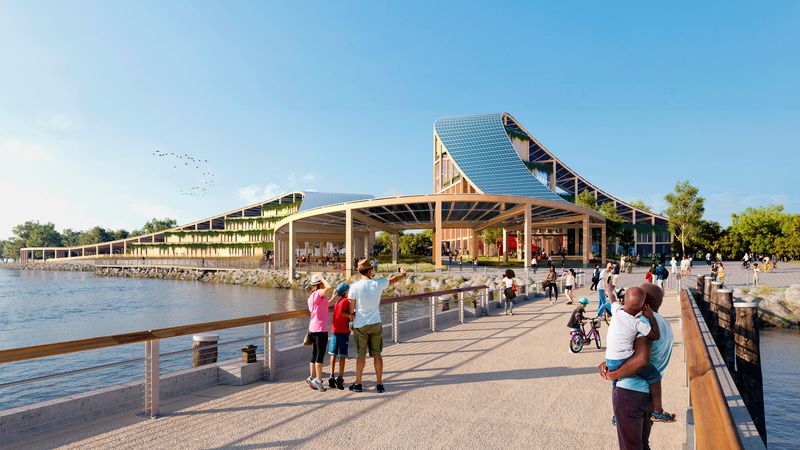
If you haven’t already heard about the new $700 million investment to build a campus on Governors Island dedicated to finding solutions to address the climate crisis announced by Mayor Eric Adams in April this year — now you have! Following a similar approach to the Cornell Tech campus on Roosevelt Island championed by former Mayor Michael R. Bloomberg, this project is even more ambitious and transformative. The island will host a climate hub called the “New York Climate Exchange.” This new campus will serve as a “living laboratory” featuring a resilient net-zero design created by architecture firm SOM. Expected to open in 2028, the project will bring research, education, job training, and cultural partners together at one of the most eco-friendly sites in the city.
Next, check out 10 Buildings That Tell the Story of NYC’s Green Affordable Housing



